From Antarctica to Instagram to superconducting electrical circuits, topics explored by professors and students run the gamut.
Illustrations by Matthew Twombly
A
An Antarctic drilling mission will aim to answer climate change questions about how much and how fast sea level will rise with warming temperatures. Professor Amy Leventer (geology) is a principal investigator on an international team supported by a $98,000 National Science Foundation grant to Colgate University (total NSF grant = $3.06 million). Scientists estimate the Earth’s climate will warm 2°C in the coming decades, so the researchers will be collecting sediments from beneath the
West Antarctic Ice Sheet to find evidence of the effects of past interglacial warming in order to predict the future.
B
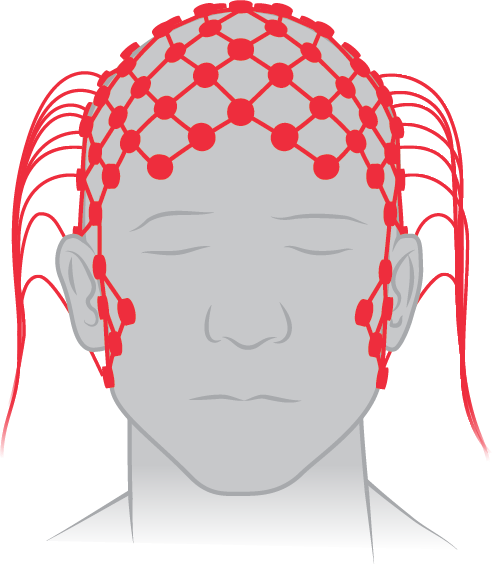
Mind reading may seem like a superpower detailed in comic books, but it’s a day-to-day reality for Professor of Psychology and Neuroscience Bruce Hansen and several of his students. Using electroencephalogram testing, which includes a participant wearing a head net that measures brain activity, he’s looking at how neurons process images to better understand how the mind makes sense of what we see. “All of the work in the lab is focused on just basic science; understanding what the brain is doing,” Hansen told Spectrum News 1. Hansen is the first Colgate professor to receive the James S. McDonnell Foundation award, which currently funds this work.
C
A group of former child soldiers who had been forcibly recruited into armed groups active along the Democratic Republic of the Congo/Rwanda border have escaped to South Africa, where Professor Susan Thomson (peace and conflict studies) is documenting their stories as they seek to rebuild their lives. Her ethnographic research builds off of previous work documenting refugees, first with Somali girls who are now in Kenya, and more recently with Congolese women who resettled in Cape Town. Thomson’s goal is to “contribute to both the academic and policy literatures on disarmament, demobilization, rehabilitation, and reintegration programs in Africa and elsewhere in the world.”
D
Fossils are not simply discovered — they’re made through a process in which multiple forces determine which pieces become valuable and meaningful objects. Professor Elana Shever (sociology and anthropology) has a forthcoming book that delves into this topic, tentatively titled Making Our Beasts: Dinosaurs, Fossils and Science in the United States. “There’s this misconception that paleontologists go out, dig, and find an entire skeleton just lying there,” Shever says. “That’s not actually what happens.” To witness science in action, she observed paleontologists on digs and in the lab, where pieces of broken fossils are glued together. “I don’t want to undermine the idea that this is all based in rigorous science, but I do want people to appreciate the amount of labor that goes into making fossils.”
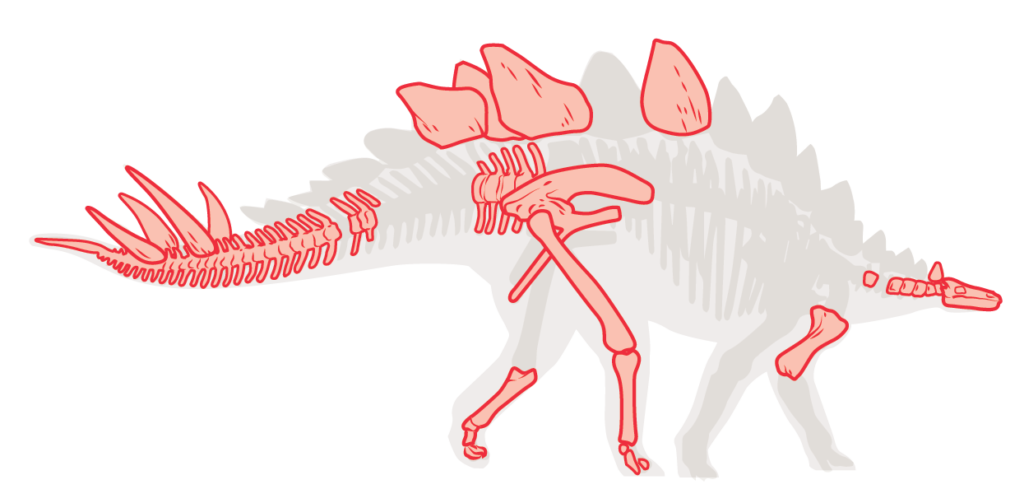
E
Professor Jacob Abell’s forthcoming book, Spiritual and Material Boundaries in Old French Verse: Contemplating the Walls of the Earthly Paradise, details how medieval poets writing in Old French imagined the Earthly Paradise — a utopian future of economic solidarity built on the image of the Heavenly Jerusalem from the Biblical book of the Apocalypse. “I had the pleasure of writing this book at Colgate while teaching an advanced literature seminar focused on questions of climate change and ecology in medieval French literatures,” Abell says. “My students were brilliant conversation partners as I refined the different arguments of my book.”
F
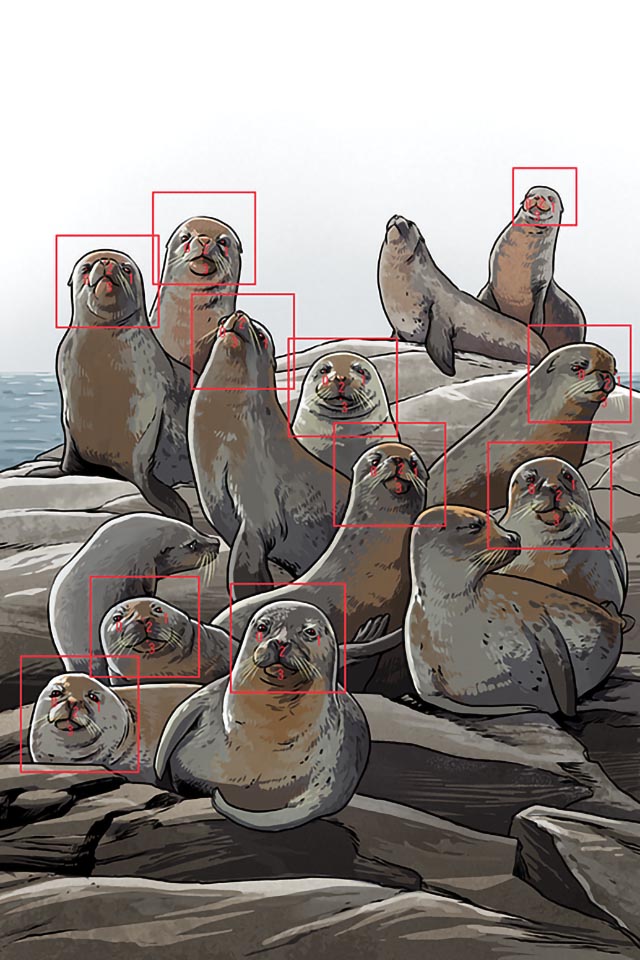
To improve methods of monitoring harbor seals, researchers are testing the use of automated facial recognition technology.
The software, called SealNet, has been piloted on pinnipeds in Maine. Photographic data collection — taken from a distance and with measures so as not to disturb the seals — developed and trained SealNet, which will ultimately be used to aid ecological and behavioral studies of marine mammals. A team of Colgate undergraduate research students (Hieu Do ’23, Zach Birenbaum ’22, Lauren Horstmeyer ’22, and Hailey Orff ’24), with Professors Krista Ingram (biology) and Ahmet Ay (biology and mathematics), has recently published their findings.
G
Instagram and Facebook banned the posting of graphic images of self-harm (e.g., cutting) in 2019 “due to the potential risk that such imagery could unintentionally promote the behavior.” To examine the effects of the ban on social media users, Professor Will Cipolli (mathematics) co-authored a study using data-mining techniques that included assessing 8,013 tweets. The co-authors found that a negative consequence of the ban is that it removed avenues that provided support and celebrated recovery for those who used the platform to help their mental health. The researchers’ goals are to provide insights for policy makers.
H
Hamilton, N.Y., was the subject of a case study on community-based climate action planning, published by Professor Andrew Pattison (environmental studies), Professor Christopher Henke (sociology and environmental studies), and John Pumilio (Colgate’s director of sustainability). In the paper, the co-authors describe their efforts to create and cultivate a community-based multi-stakeholder group centered around local climate change planning and advocacy. In addition, they write that higher education institutions, especially those situated in small rural communities with often limited resources, have a vital role in supporting the climate strategies of local actors. “Productive partnerships are established when student and faculty research supports the academic mission of the university while helping to advance climate action planning at the municipal level,” the co-authors report.
I
As climate change causes higher temperatures, how do dogs regulate internal heat? Associate Professor of Biology Ana Jimenez and her students have been studying different sizes and ages of canines across the seasons to learn more. In the ongoing study, the researchers last year examined 55 pet dogs by taking their temperatures before and after a 2-mile hike in spring, summer, and winter. “As expected, it seems they are able to go into hyperthermia [i.e., overheating] easier during the summer months,” Jimenez says. “That can be really bad.” This summer, the group has been studying elite athlete dogs (those at competitions and sled dogs) to compare: Are they better at temperature regulation than the “couch potato dogs”?
J
Jumping worms are an invasive species that are continuing to spread and are now in more than a dozen states, damaging plants and animals. The worm (also called crazy worms, snake worms, and Alabama jumpers) have the potential to destroy forests and gardens because their eating habits change and erode the soil. Professor Tim McCay (biology) has been researching them since moving into a house in Madison County in 2004 and finding the property infested with earthworms he didn’t recognize. He’s since been lending his expertise to find control solutions and prevent further spread. “I want to contribute to our understanding of these obnoxious and fascinating creatures,” he told the New York Invasive Species Research Institute. He and colleagues have received a grant from the Northeastern States Research Cooperative, which is funded by the U.S. Department of Agriculture, to further study in the Adirondacks and other northern forest ecosystems.
K
There is “a human tendency to turn away from knowledge,” Professor Ed Witherspoon (philosophy) says. With knowledge comes responsibility; for people to acknowledge what they know is for them to explicitly accept the responsibilities their knowledge entails. Sometimes the responsibilities are ones they would rather not face, as when they have wronged someone or benefited from injustice. “And in such cases, they may fence themselves off from these responsibilities by maintaining a shield of willful ignorance or by refusing to acknowledge what they know. Such stances are forms of deception and self-deception that prevent us from achieving genuine community,” he says. In a recent Arts and Humanities Colloquium, Witherspoon set out criteria for making acknowledgments that overcome these barriers. In one example, he applied these criteria to the contentious question of whether institutions should use land acknowledgment statements to acknowledge the wrongs done to the Indigenous people of North America.
L
In the hopes of increasing support and inclusion of LGBTQ youth in schools, Professor Susan Woolley (educational studies and LGBTQ studies) published gender-affirming curriculum in her new book, Teaching About Gender Diversity. With teachers in mind, Woolley designed lesson plans and resources to implement gender-inclusive pedagogical practices, to talk about gender and sex, and to foster more inclusive classroom communities.
M
What role does military experience play in decision-making? In a recent paper in International Studies Quarterly, Associate Professor Danielle Lupton argues there are two critical problems with the way past research has addressed this question: “First, it fails to adequately consider the underlying mechanisms linking military service to elite policy preferences. Second, it narrowly focuses on the use of force and largely ignores other ways in which military experience may shape elite behavior.” To test this argument, she looked at how members of Congress who were selected in the Vietnam draft lottery leaned in foreign and defense policy roll call votes, compared to those who weren’t.
N
Anomalies in the configurations of network routers may lead to network reliability or security issues. Throughout the past year, Aaron Gember-Jacobson, assistant professor of computer science, has been working with students (Devon Lee ’22, Jyotirmay Chauhan ’23, Emily Yu ’23, and Sara Alam ’23) to develop a system that uses machine learning to identify patterns in network configurations and flag deviations as potential errors that could lead to security flaws. Lee, Chauhan, and Yu presented their work at the NetVerify Network Verification Workshop in November 2021. Chauhan and Alam are also continuing to work on the project this summer.
O
Can smiling impact your body’s hormones? For her senior thesis, neuroscience major Ani Arzoumanian ’22 studied levels of oxytocin — a neuropeptide dubbed the “love hormone” because of its role in the formation and maintenance of social bonds — during a smiling exercise. Previous research describes a strong association between oxytocin and the perception and mimicry of facial expressions, but no other study to date has isolated smiling as a candidate for triggering endogenous release of the hormone. In Arzoumanian’s experiment, participants were instructed to mimic smiles while watching a 30-minute video of actors with smiling or neutral faces. Saliva samples and mood scores were collected before and after. In her findings, Arzoumanian observed no significant overall change in oxytocin levels, and results yielded no significant correlations between oxytocin levels and mood. This “allows us to discuss the possibility that smiling behavior must be socially meaningful in order to trigger oxytocin release,” she says.
P
Co-directed by Professor Yukari Hirata (Japanese and linguistics) and Professor Spencer Kelly (psychological and brain sciences), students from the Center for Language and Brain are studying the most effective methods for people to learn the different pitches of the Japanese language (called “pitch accent”). The study uses EEG headsets to measure the brainwaves of students as they listen to different pitch accents and later attempt to identify them by ear.
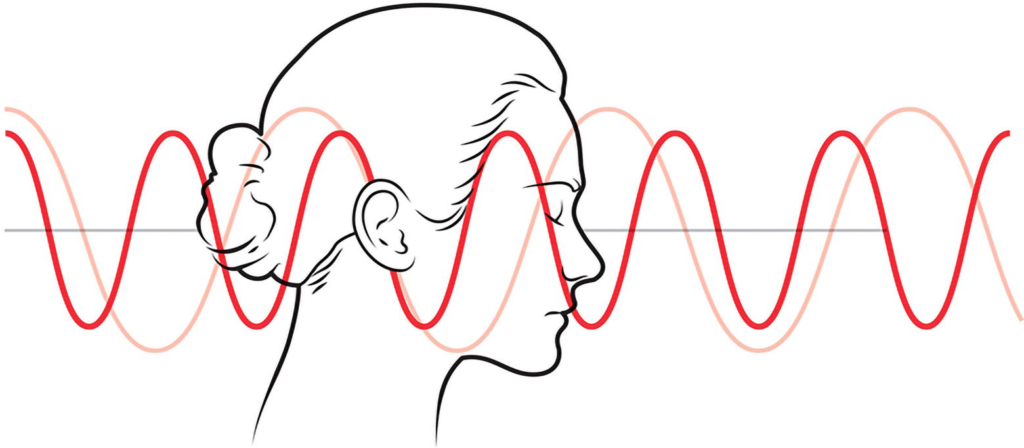
Q
Qualitative data, paired with quantitative data, are necessary to provide a full picture of refugee settlement and integration, Professor Ellen Kraly recently asserted in a journal article titled “The Role of Demographic Research in Promoting Refugee Resettlement and Integration in the United States.” She explains: “You have to understand the ‘whys,’ their motivation and aspirations. That requires spending time to actually talk to people, to understand their lived experience,” adds the William R. Kenan Jr. Professor of geography and environmental studies. A leader in this demographic work, Kraly believes in the importance of community-based action and has long been working with refugee populations in Utica.
R
Studying Las Vegas facilities that house multiple restaurants, Assistant Professor of Economics Matthew Makofske found that restaurants performed much worse when they received the first inspection of a visit — i.e., when caught unawares — than when they were inspected after another establishment in their facility. The establishments assessed 21% more inspection-score demerits and were cited for 31% more critical violations in these surprise inspections, as Makofske published in the Journal of Economic Behavior and Organization. “It’s concerning, because inspection programs are largely about promoting compliance on the days an inspector doesn’t show up. When restaurants anticipate inspections, it inhibits that.”
S
Superconducting electrical circuits — which transmit electrical currents without any energy loss — are being studied by Colgate researchers with two objectives: to find ways to improve computers’ efficiency, and to help understand the human brain. “To continue improving computers at the rate we have been is going to require more and more energy, to the point of becoming unsustainable,” says Professor of Physics Ken Segall, who has been studying this phenomenon with a number of students, including Will Friend ’22, Eric Matt ’22, Raluca Ghilea ’22, Jack Tregidga ’21, Cheeranjeev Purnessur ’20, and Ryan DeSilva ’20. They have also been studying the development of electrical circuits that operate like neurons. “If the artificial neurons show something interesting, controversial, or problematic, there’s probably a good chance that’s also happening in our brain in some way,” Segall explains.
T
How do people conceive of past exposures to toxic substances — whether in relation to themselves, their families, or their communities — and how do these exposures link them to other people and places?
That’s the topic of a book project by Associate Professor of History Heather Roller called A Shared Toxic History: Communities of Exposure in Rural America. Focusing on the history of agrichemical use in the United States from the 1970s to the present, the research will delve into how people in rural communities have experienced and understood the contamination of their bodies, fields, and water over the course of the last half century.
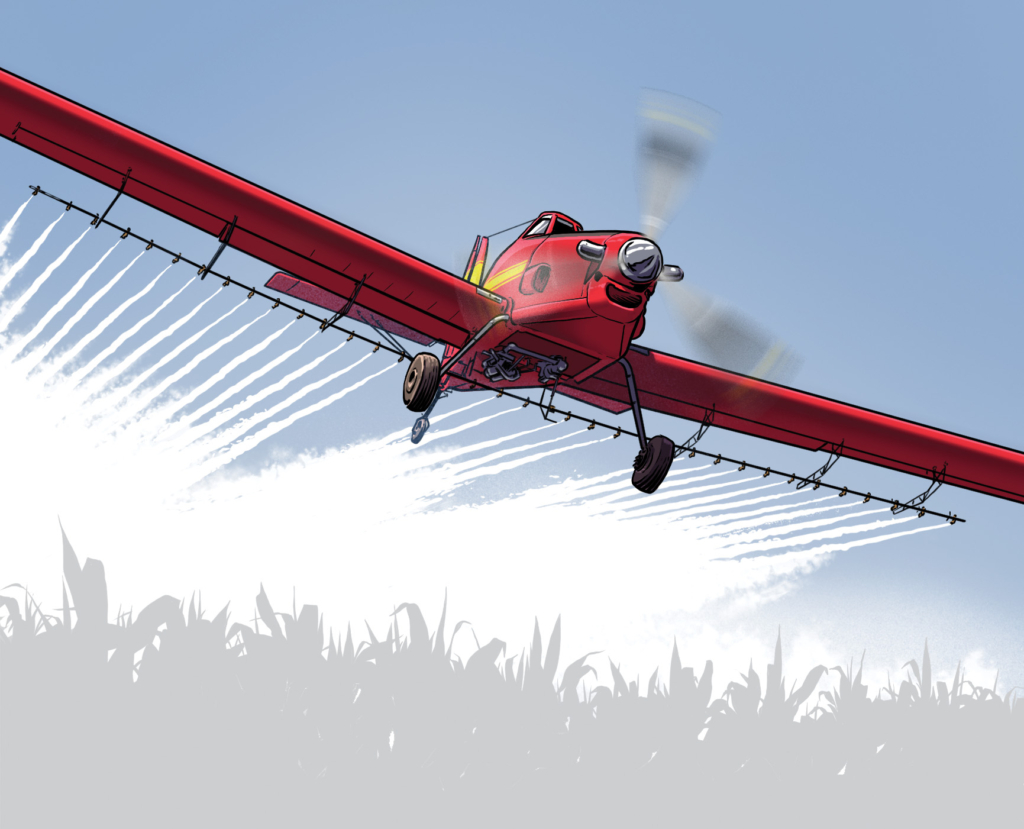
U
In Uganda, Colgate researchers are assessing the prevalence of antibiotic-resistant bacteria responsible for upper respiratory infections in children younger than 5. The team includes professors Frank Frey (biology and environmental studies), Ellen Kraly (geography and environmental studies), and Peter Scull (geography). They’re partnering with Bwindi Community Hospital (BCH), with which Colgate has collaborated on projects since 2011. This summer they traveled with nine students to finish setting up the lab and finalize the study protocols. Soon they’ll start collecting hundreds of samples throughout the catchment area of BCH. They’ll be using a combination of biological, geographic, and qualitative analyses to reveal factors associated with the prevalence and patterns of antibiotic-resistant bacteria in communities, which will inform both public health interventions and clinical formulary decisions.
V
Fourteen students in Professor Georgia Frank’s Love, God & Sexuality course volunteered with Millay Arts, a nonprofit that offers multidisciplinary artists’ residencies, to compile a digital database of the organization’s alumni. “I wanted to develop an alternative to the thesis-driven or analytic essay and give students a chance to discover collaboratively how humanities students can provide research that’s immediately helpful to nonprofits,” Frank says. This project, Millay Lab/Savage Beauty Squad, utilized the public humanities aspect of the course and allowed students to conduct research on how a person builds a life as an artist. “Although I am a historian of ancient religion, collaborating with students on this 21st-century project has been transformative for my own research,” Frank adds. Most recently, she penned the forthcoming book Unfinished Christians: Ritual Objects and Silent Subjects in Late Antiquity with Penn Press.
W
Western Sahara is one of the last remaining territories in the world that has yet to formally achieve self-governance or official decolonization. It’s been the center of a conflict between an independence movement and Morocco (which claims Western Sahara is part of its kingdom) since the ’70s. The European Council on Foreign Relations has engaged Professor Jacob Mundy (peace and conflict studies) as a fellow to research ways to facilitate the peace process. “We championed a compromise agreement based upon the concept of free association,” Mundy says, “which would try to create a middle ground between an absolutely independent nation state and one that is integrated into Morocco.” He has since stayed in dialogue with the various stakeholders: “We’re keen to continue — not just throw a report out and let it sit, but keep it as a living document.” The UN recently appointed a new lead negotiator for the peace process, “and the outcome of that might tell us something interesting.” In the meantime, Mundy has released a second edition of his co-written book Western Sahara: War, Nationalism, and Conflict Irresolution, which picks up where the previous edition left off in 2009.
X
Citizenship education in China (i.e., loyalty and obedience training) was implemented by the Communist Party in 1957. Under Xi Jinping’s rule, beginning in 2012, the connection between good citizenship and loyalty/obedience to the Communist Party has only strengthened and is an explicit part of the universal education system in contemporary China. Professor Carolyn Hsu (sociology) has been researching its effectiveness, specifically studying whether increased years of exposure makes subjects more likely to agree with the national curriculum. She and her colleagues have found that, paradoxically, the more citizenship education a person receives, the less likely they are to endorse the Chinese state’s message. In addition, a subsection of the population is redefining patriotism for themselves to mean focusing on the ways university-educated citizens contribute to the country through their expertise and skills.
Y
In Associate Professor of History Dan Bouk’s forthcoming book, Democracy’s Data: The Hidden Stories in the U.S. Census and How to Read Them, readers are taken back to the year 1940, when census takers traveled door to door to record facts about the people of America.
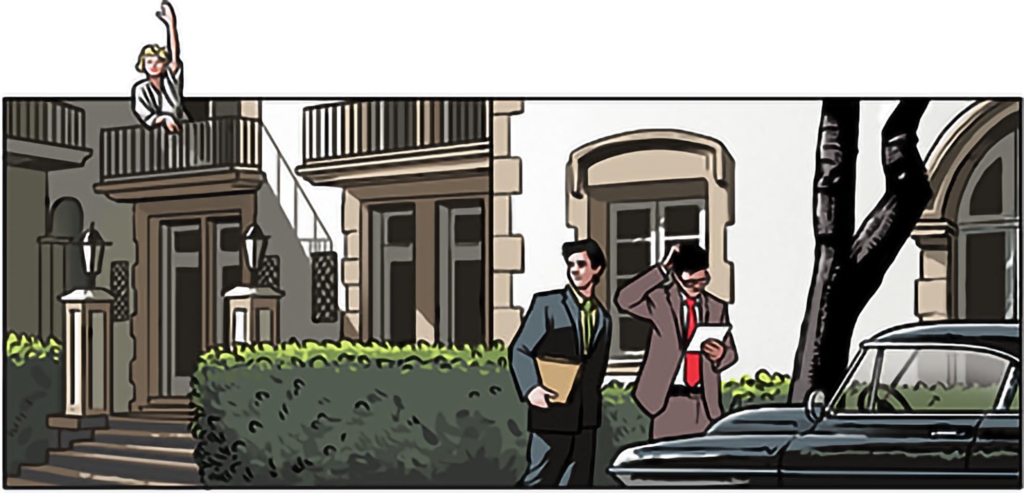
Building upon Bouk’s prior research, the book examines the political implications of the data-driven census and asks readers to think more deeply about connections among representation, identity, and governance today. Bouk also brings his census research to the classroom: Recently, Ashley Tourtelot ’22 came across Marilyn Monroe in 1950 census records. “Some of the fun stemmed from the time travel that historical research so often makes possible,” Bouk explains on his blog. “Looking at census records, it feels like you are somehow closer to the person represented. It feels like you’re there with them, or close by, and the intimacy across decades is powerful.”
Z
Subduction zones — where an oceanic plate collides with a continental plate and the former sinks below the latter — are usually the locations of major earthquakes, tsunamis, and volcanoes. Alaska is home to one of the largest subduction zones on Earth, so Professor Aubreya Adams (geology) and a team collected data there in 2018-–19 using 105 seismometers on land and at the bottom of the ocean. Now she’s enlisting the help of students to examine the data set — “there’s something like 15 terabytes” — in order to build a model of how subduction zones work deep inside the earth. “The biggest earthquakes don’t happen very frequently, which is fortunate for people, but it means that we don’t understand them very well,” she says. So, if researchers can answer questions about the dynamics and hazards of this zone, “it’s important, not just for Alaska,” Adams explains, “but we could also apply what we know to other subduction zones around the world.”
